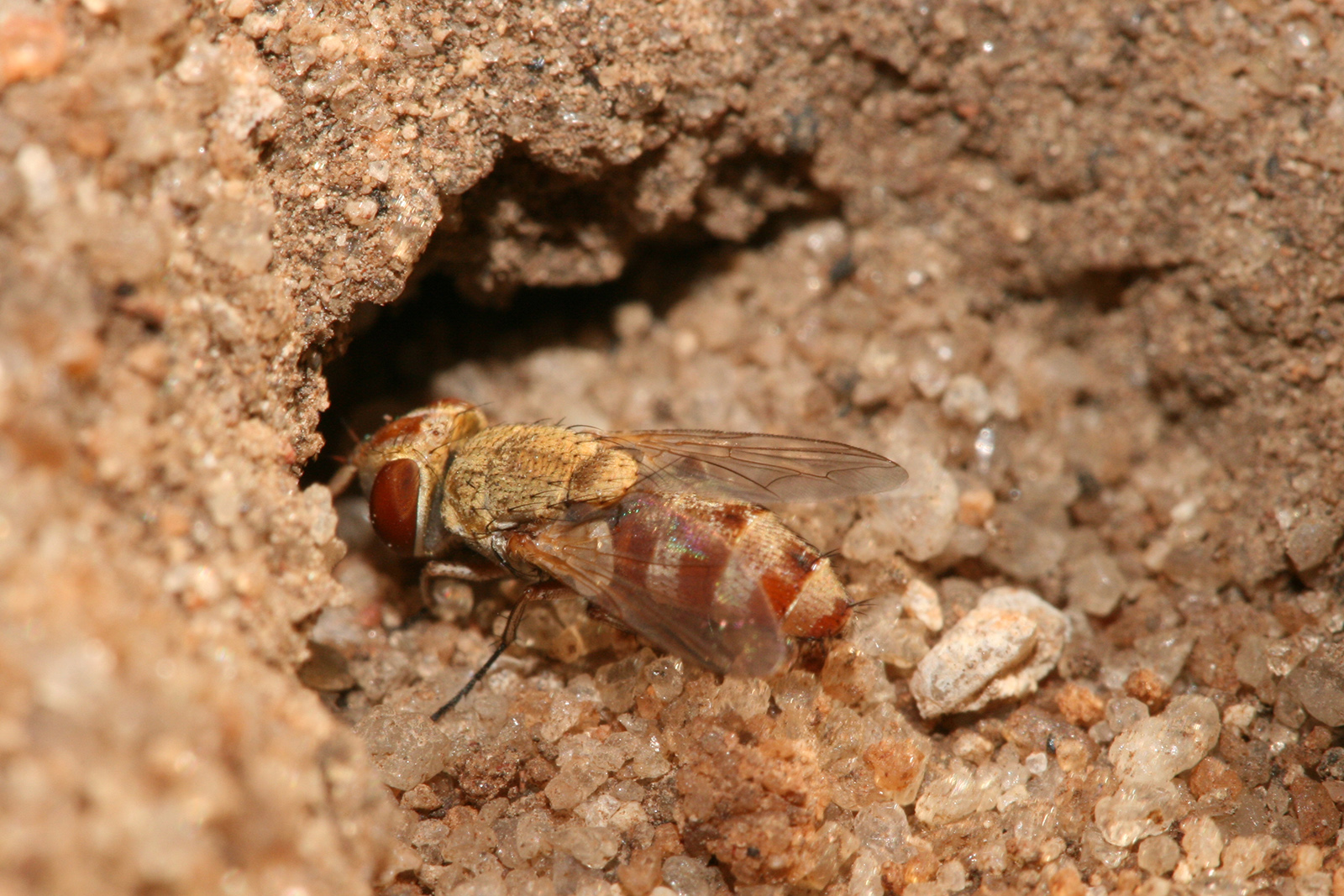|
Miltogramminae
The Miltogramminae are a subfamily of the family Sarcophagidae. They are kleptoparasites of solitary bees and solitary wasps (not eusocial species). Genera *'' Aenigmetopia'' Malloch, 1930 *'' Alusomyia'' Villeneuve, 1933 *'' Ambouya'' Villeneuve, 1935 *'' Amobia'' Robineau-Desvoidy, 1830 *'' Apodacra'' Macquart, 1854 *'' Beludzhia'' Rohdendorf, 1935 *'' Chaetapodacra'' Rohdendorf, 1935 *'' Chivamyia'' Pape, 1996 *'' Chorezmomyia'' Rohdendorf, 1935 *'' Craticulina'' Bezzi, 1906 *'' Dolichotachina'' Villeneuve, 1913 *'' Eremasiomyia'' Rohdendorf, 1927 *'' Eumacronychia'' Townsend, 1892 *'' Euphyto'' Townsend, 1908 *'' Gymnoprosopa'' Townsend, 1892 *'' Gymnopsidia'' Shewell, 1987 *'' Hoplacephala'' Macquart, 1846 *'' Khowaba'' Pape, 1991 *'' Lamprometopia'' Macquart, 1846 *'' Macronychia'' Rondani, 1859 *'' Medomyia'' Rohdendorf, 1926 *'' Mesomelena'' Rondani, 1859 *'' Metopia'' Meigen, 1803 *'' Metopodia'' Brauer & von Bergenstamm, 1889 *'' Miltogramma'' M ... [...More Info...] [...Related Items...] OR: [Wikipedia] [Google] [Baidu] |
Sarcophagidae
Sarcophagidae () are a family of flies commonly known as flesh flies. They differ from most flies in that they are ovoviviparous, opportunistically depositing hatched or hatching maggots instead of eggs on carrion, dung, decaying material, or open wounds of mammals, hence their common name. Some flesh fly larvae are internal parasites of other insects such as Orthoptera, and some, in particular the Miltogramminae, are kleptoparasites of solitary Hymenoptera. The adults mostly feed on fluids from animal bodies, nectar, sweet foods, fluids from animal waste and other organic substances. Juveniles need protein to develop and may be laid on carrion, dung or sweet plant foods (including fruit, nuts, and artificial foodstuffs). Diagnostic characteristics Members of the subfamily Sarcophaginae are small to large flies with black and gray longitudinal stripes on the thorax and checkering on the abdomen. Other key features include red eyes and a bristled abdomen. Abdominal sternit ... [...More Info...] [...Related Items...] OR: [Wikipedia] [Google] [Baidu] |
Kleptoparasitism
Kleptoparasitism (etymologically, parasitism by theft) is a form of feeding in which one animal deliberately takes food from another. The strategy is evolutionarily stable when stealing is less costly than direct feeding, which can mean when food is scarce or when victims are abundant. Many kleptoparasites are arthropods, especially bees and wasps, but including some true flies, dung beetles, bugs, and spiders. Cuckoo bees are specialized kleptoparasites which lay their eggs either on the pollen masses made by other bees, or on the insect hosts of parasitoid wasps. They are an instance of Emery's rule, which states that insect social parasites tend to be closely related to their hosts. The behavior occurs, too, in vertebrates including birds such as skuas, which persistently chase other seabirds until they disgorge their food, and carnivorous mammals such as spotted hyenas and lions. Other species opportunistically indulge in kleptoparasitism. Strategy Kleptoparasitism is ... [...More Info...] [...Related Items...] OR: [Wikipedia] [Google] [Baidu] |
Craticulina Seriata
''Craticulina'' is a genus of true flies in the family Sarcophagidae. They are cleptoparasites of various species of sand wasps. They are ovoviviparous, laying larvae instead of eggs. The larvae share the prey of the sand wasp, and though they are much smaller than the wasps, many fly larvae may be present in each wasp larva, causing food to run short. Sometimes the fly larvae also attack the wasp larvae while they are small, especially if too many fly larvae and too little food are present. The flies are sand coloured, which no doubt helps camouflage Camouflage is the use of any combination of materials, coloration, or illumination for concealment, either by making animals or objects hard to see, or by disguising them as something else. Examples include the leopard's spotted coat, the b ... them, but at least some species of hosts take evasive action when ''Craticulina'' species are present, though it is not clear how effectively. Species *'' C. antachates'' ( Séguy ... [...More Info...] [...Related Items...] OR: [Wikipedia] [Google] [Baidu] |
Craticulina
''Craticulina'' is a genus of true flies in the family Sarcophagidae. They are cleptoparasites of various species of sand wasps. They are ovoviviparous, laying larvae instead of eggs. The larvae share the prey of the sand wasp, and though they are much smaller than the wasps, many fly larvae may be present in each wasp larva, causing food to run short. Sometimes the fly larvae also attack the wasp larvae while they are small, especially if too many fly larvae and too little food are present. The flies are sand coloured, which no doubt helps camouflage Camouflage is the use of any combination of materials, coloration, or illumination for concealment, either by making animals or objects hard to see, or by disguising them as something else. Examples include the leopard's spotted coat, the b ... them, but at least some species of hosts take evasive action when ''Craticulina'' species are present, though it is not clear how effectively. Species *'' C. antachates'' ( Séguy ... [...More Info...] [...Related Items...] OR: [Wikipedia] [Google] [Baidu] |
Boris Rohdendorf
Boris Borisovich Rohdendorf (russian: link=no, Борис Борисович Родендорф, 12 July 190421 November 1977) was a Soviet entomologist and curator at the Zoological Museum at the University of Moscow. He attained the position of head of the Laboratory of Arthropods, Paleontological Institute of Russian Academy of Sciences, Academy of Sciences of the USSR (now Russian Academy of Sciences) in Moscow. A student of Andrey Martynov, he was a prolific taxonomist who described numerous new taxa, including fossil Diptera Flies are insects of the order Diptera, the name being derived from the Greek δι- ''di-'' "two", and πτερόν ''pteron'' "wing". Insects of this order use only a single pair of wings to fly, the hindwings having evolved into advanced ..., and published important syntheses on fossil insects. His work is being extensively revised by the current generation of Russian paleoentomologists. Partial bibliography * Rohdendorf, B.B. 1937. iptera ... [...More Info...] [...Related Items...] OR: [Wikipedia] [Google] [Baidu] |
Charles Henry Tyler Townsend
Charles Henry Tyler Townsend (5 December 1863 – 17 March 1944) was an American entomologist specializing in the study of tachinids (Tachinidae), a large and diverse family of flies ( Diptera) with larvae that are parasitoids of other insects. He was perhaps the most prolific publisher of new tachinids, naming and describing some 3000 species and genera. He made important contributions to the biological control of insect pests and he was the first to identify the insect vector of a debilitating disease in Peru. Townsend was also a controversial figure and criticism of his approach to insect taxonomy continues to this day. Biography Townsend was born in Oberlin, Ohio, in 1863. He attended high school in Constantine, Michigan and graduated in 1882. From 1887 to 1891 he studied medicine at Columbian University (now George Washington University) in Washington, D.C. At the same time he worked in the United States Department of Agriculture as an assistant entomologist for Charles V. ... [...More Info...] [...Related Items...] OR: [Wikipedia] [Google] [Baidu] |




